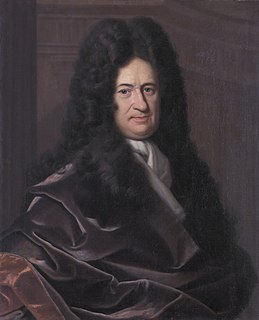Related Research Articles
In mathematics, model theory is the study of the relationship between formal theories, and their models, taken as interpretations that satisfy the sentences of that theory.

The history of calculus is fraught with philosophical debates about the meaning and logical validity of fluxions or infinitesimal numbers. The standard way to resolve these debates is to define the operations of calculus using epsilon–delta procedures rather than infinitesimals. Nonstandard analysis instead reformulates the calculus using a logically rigorous notion of infinitesimal numbers.

Abraham Robinson was a mathematician who is most widely known for development of non-standard analysis, a mathematically rigorous system whereby infinitesimal and infinite numbers were reincorporated into modern mathematics. Nearly half of Robinson's papers were in applied mathematics rather than in pure mathematics.
In mathematical logic, the compactness theorem states that a set of first-order sentences has a model if and only if every finite subset of it has a model. This theorem is an important tool in model theory, as it provides a useful method for constructing models of any set of sentences that is finitely consistent.
In mathematical logic, the Löwenheim–Skolem theorem is a theorem on the existence and cardinality of models, named after Leopold Löwenheim and Thoralf Skolem.
In mathematical logic, and particularly in its subfield model theory, a saturated modelM is one that realizes as many complete types as may be "reasonably expected" given its size. For example, an ultrapower model of the hyperreals is -saturated, meaning that every descending nested sequence of internal sets has a nonempty intersection, see Goldblatt (1998).
In model theory, a branch of mathematical logic, two structures M and N of the same signature σ are called elementarily equivalent if they satisfy the same first-order σ-sentences.
In mathematical logic, a theory is categorical if it has exactly one model. Such a theory can be viewed as defining its model, uniquely characterizing its structure.
In model theory, a branch of mathematical logic, an elementary class is a class consisting of all structures satisfying a fixed first-order theory.
In mathematics, and in particular model theory, a prime model is a model that is as simple as possible. Specifically, a model is prime if it admits an elementary embedding into any model to which it is elementarily equivalent.
In model theory, a branch of mathematical logic, and in algebra, the reduced product is a construction that generalizes both direct product and ultraproduct.
In model theory, a subfield of mathematical logic, an atomic model is a model such that the complete type of every tuple is axiomatized by a single formula. Such types are called principal types, and the formulas that axiomatize them are called complete formulas.
In mathematical logic, Lindström's theorem states that first-order logic is the strongest logic having both the (countable) compactness property and the (downward) Löwenheim–Skolem property.
Howard Jerome Keisler is an American mathematician, currently professor emeritus at University of Wisconsin–Madison. His research has included model theory and non-standard analysis.
In model theory, a branch of mathematical logic, the notion of an existentially closed model of a theory generalizes the notions of algebraically closed fields, real closed fields, existentially closed groups, and dense linear orders without endpoints.
In model theory, a first-order theory is called model complete if every embedding of its models is an elementary embedding. Equivalently, every first-order formula is equivalent to a universal formula. This notion was introduced by Abraham Robinson.
In model theory, a branch of mathematical logic, Chang's conjecture, attributed to Chen Chung Chang by Vaught, states that every model of type (ω2,ω1) for a countable language has an elementary submodel of type. A model is of type (α,β) if it is of cardinality α and a unary relation is represented by a subset of cardinality β. The usual notation is .
Chen Chung Chang (Chinese: 张晨钟) was a mathematician who worked in model theory. He obtained his PhD from Berkeley in 1955 on "Cardinal and Ordinal Factorization of Relation Types" under Alfred Tarski. He wrote the standard text Chang & Keisler (1990) on model theory. Chang's conjecture and Chang's model are named after him. He also proved the ordinal partition theorem (expressed in the arrow notation for Ramsey theory) ωω→(ωω,3)2, originally a problem of Erdős and Hajnal. He also introduced MV-algebras as models for Łukasiewicz logic. Chang was a professor at the mathematics department of the University of California, Los Angeles.
In mathematical logic, abstract model theory is a generalization of model theory that studies the general properties of extensions of first-order logic and their models.
In mathematics, an η set is a type of totally ordered set introduced by Hausdorff that generalizes the order type η of the rational numbers.
References
- ↑ C. C. Chang and Jerome Keisler Model Theory, 1990 ISBN 0-444-88054-2 page 128
- ↑ C. C. Chang and Jerome Keisler Model Theory, 1990 ISBN 0-444-88054-2 page 132